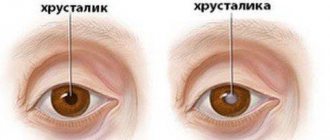Types of abstractions
Images formed without the participation of the content side of the concept:
- Insulating. Its goal is to highlight a characteristic feature of an object and increase attention to it. For example, there is an apple on the table. A person notices that it is green or sour.
- Generalization. Here the brain receives a complete picture of the appearance of the entire image. Let's use a mathematical equation as an example. The goal is a solution without taking into account individual numbers, pluses, minuses and other signs.
- Idealization. Discarding unimportant elements. A method of obtaining knowledge, without which exact and natural sciences cannot do.
In reality, there are no separate, unrelated elements. They cannot be touched or measured in isolation.
Forms of abstract thinking
Forms are divided into types depending on the final result of thinking:
- Concept. Here the characteristics characteristic of the object are recorded. Concepts are expressed in individual words - backpack, glass, or are combined into combinations of words - school backpack, faceted glass. This is an inference. It conveys a common property characteristic of several objects.
They are different, but certain qualities allow the brain to group them into one subgroup. For example, a table. They can be round or square, tall or short, and have light or dark colors. The common thing is that it is customary to place objects on them. A similar purpose allows thinking to combine tables into a single group.
- Judgment. A form of abstract mental type of thinking in which the characteristics and properties of an object are assessed. A judgment is expressed in the form of an affirmative sentence. Autumn has come - the simplest proposition. Autumn has come, the trees have shed their leaves - a complex structure made of two simple ones.
The human brain can use its flexibility to agree or disagree with phenomena. The verbal conclusion is unconditional. Simple - the dog barks, complex - it started to rain, it’s damp outside. The first sentence is short and clear, the second contains a logical chain.
Judgments are true or false when a person makes his own conclusions, regardless of the actual facts.
- Conclusion. This is the final thought. Arises from a complex of 2 or more judgments. It is formed from three components: premise, processing and final conclusion - a process of logical action, the result of which is a new judgment. The brain uses its thoughts to come to its own conclusion.
In the process of learning about the world around us, the human brain strives to achieve true knowledge. Those. This is an adequate assessment of the processes and objects in which a person lives.
Scientific laws are truth. Distinguishing truth from error takes practice. It is formed in the process of the social and production function of each person over time.
Examples of abstract thinking
One of the striking examples is the ability of a person to talk and communicate with people around him using words. There are no letters, numbers, or words in nature. But people were able to create an alphabet, put words together and designate each object, property and phenomenon with its own name.
The ability to think and create abstractions is manifested in the mathematical sciences. For example, the number 3. There is no such phenomenon in nature, but a person understands that we are talking about three identical objects, properties, functions, points, etc. The numbers were invented by people themselves to simplify and characterize many phenomena. With development, humanity began to use a lot of concepts that do not exist in nature.
Why develop abstract thinking
Modern man is constantly learning to break away from simple and concrete objects, leaving the ancient past behind. In those days, all objects were assessed for appearance, color, shape, smell and other specific characteristics. Now people who have mastered information technology are ready to more actively delve into their own subconscious.
This process is impossible without the development of abstract thinking. The sooner you start mastering these skills, the easier it will be for your child to accept new things and the more interesting life will be.
What does it mean to think abstractly and why is it needed in life?
Abstract thinking is one of the types of intellectual abilities that allows a person to distinguish the particular from the general, i.e. think about the situation without being distracted by minor details. This skill allows you to concentrate on solving a specific problem, looking at it as if from the outside, which sometimes leads to the most original ways of solving it.
Many people think in stereotypes; they perform the same actions in different situations that are easy to predict. A person with abstract thinking is able to go beyond stereotypes and turn the situation in his favor.
The development of abstract thinking in children is simply necessary for the successful completion of the school curriculum, and it will help children quickly understand the world, gain self-confidence and the ability to make independent decisions.
Already from early childhood, you can notice that a child is characterized by non-standard thinking. He sometimes sees what others do not see. But with age, this quality can be suppressed by physiological and social factors, when “thinking like everyone else” is considered the norm. To prevent this, it is necessary to develop abstract thinking in children.
Development of abstract thinking in children
This process goes along with the activation of mathematical abilities. Almost from birth, children are able to conduct a comparative analysis - to distinguish between the sizes, temperatures, and sensory characteristics of different things. Then begins the long process of learning complex ideas related to numbers and counting, becoming familiar with the alphabet, etc.
Before you begin to develop abstract thinking, you should evaluate the child’s real abilities and not strive for instant learning in something for which his brain is not yet developed enough. At the first stage, games and tasks aimed at stimulating logical thinking will help.
How to develop abstract thinking in a child?
What is abstract thinking and why is it needed? “Explanatory Dictionary of the Russian Language” (edited by D.N. Ushakov) states that in the scientific concept, abstraction is the mental separation of some properties and characteristics of an object from the object itself. Remember the film “Chapaev”: where should the commander be during an attack? Potatoes laid out on the table symbolize the location of the troops. They are completely different from a commander going on an attack or an army, but nevertheless they successfully cope with their task - they symbolize the properties and characteristics of certain objects. The object and the symbols that designate or define it are different things, and yet, when you hear the word “cow,” you imagine a large, horned, cloven-hoofed, “milk-bearing” animal, and not a gray, striped, clawed, meowing animal. Abstract thinking is inseparable from mathematicians and physicists, poets and writers, musicians and composers. Any creativity requires abstract thinking, that is, manipulation with symbols. And if you want to develop your child’s creative abilities, then you need to start with the development of abstract thinking. Some are inclined to believe that abstract thinking is like an ear for music: it either exists or it doesn’t. An innate gift. And its development is practically impossible, just as it is impossible for someone who lacks an ear for music to become a composer. In extreme cases, persistent exercises for the development of abstract thinking can give some temporary results, but as soon as you stop them, everything immediately returns to normal. But here’s the thing: it turns out that all children are born with an excellent ear for music. And if a five-year-old child is found to lack it, then it was not a bear who stepped on his ear at birth, but throughout the five years of his life, musical development occurred in the opposite direction: from excellent musical ear to “bear-like.” And if you concentrate almost immediately after the birth of a child on the development of his musical abilities, then by the age of five he will be a potential Chaliapin or Caruso. So abstract thinking can be developed; every child has its germs, and they are absolutely viable. But they are like plants. Without proper care they will simply wither away. But everyone knows that if the plant is completely dry, then no amount of watering or care will produce results. The simplest game that develops abstract thinking is what a cloud looks like. Clouds, fortunately, are absolutely accessible and free. And they offer many different pictures without requiring any effort (well, except maybe raising your head). A cloud can look like a dragon, a knight, a castle, puffs of smoke, a piece of cotton candy, a flower... There are an infinite number of forms. By looking at clouds in terms of symbols and their manipulation, rather than in terms of meteorology (it looks like it's going to rain!), the child develops abstract thinking. By the way, the dialogue between Winnie the Pooh and Piglet from the Soviet cartoon is also a vivid example of abstract thinking. The bees were offered an excellent logical chain of symbols: a “cloud” in the face of Winnie the Pooh, Piglet’s umbrella, and even corresponding statements (“I am a cloud, a cloud, a cloud, and not a bear at all...”, “It seems like it’s going to rain!” ). The only problem is that the bees refused to think in symbols and preferred specifics. But that is another story. There is a game that children almost never get tired of, and at the same time develops abstract thinking perfectly: shadow theater. What is a shadow if not a real abstraction? She is not an object, but only its symbol. But you can play with this symbol, unlike clouds - you can only watch them.
| Pinocchio for the shadow theater (Photo: Sofia Vargan, personal archive) |
All you need for this game: a lamp, a sheet and a set of cardboard figures. You can make the figures yourself, it’s not too difficult. Various shadow plays are performed. Any children's fairy tale is a ready-made script that requires only “actors.” Moreover, “actors” can be multifaceted. The bear from the fairy tale about Masha and the Three Bears will perfectly cope with the role in the fairy tale about Teremka. The tower itself will perfectly depict a hut in any other fairy tale. The wolf is Little Red Riding Hood, the Seven Little Goats, and the dog in “Turnip.”
| Shadow of a dog (Photo: Sofia Vargan, personal archive) |
| A slight change of position, and it's already a duck! (Photo: Sofia Vargan, personal archive) |
| Flying bird (Photo: Sofia Vargan, personal archive) |
Another interesting exercise is shadows on the wall.
The symbol and what it symbolizes. The shadow cast by the hands takes on the shape of completely different objects. The child no longer sees hands, but a flying bird, a barking dog, a hare, and so on. This shadow “theater” can be continued on the street. What kind of shadow will you get if you raise your arms above your head? How to make a shadow-hare? Shadow tree? Chinese pagoda? Offer your child abstractions, invite him to create abstractions himself. Play with clouds and shadows. Maybe your future Pushkin is growing up. Or Lobachevsky. Help him grow up.
Author Sofia Vargan
Source Internet magazine “School of Life”
✨Read the blog of many mothers about earning money while on maternity leave✨
Did you like the article? Tell your friends about it.
Exercises for children
Techniques intended for children are different from those used by adults. But at the same time they are no less effective. This happens because a child’s curious brain is completely open to learning new things.
Clouds
They all differ in sizes, colors, shapes. To develop abstract thinking, you need to often invite your child to imagine what a specific cloud can be compared with. In the process of thinking about this task, the brain actively works, new neural connections are established, and intelligence develops.
Shadow play
By playing with the shadows of various objects, you can create many images. All you need is a light source in a dark room and prepared contours. By moving the details, you get a variety of images. The child himself, while playing, learns to predict the outcome depending on the location of the parts. You can also invite other children. In company, they will be much more willing to play this game.
You may also be interested in the article How to better develop a child - an overview of children's developmental techniques, games, objects and exercises
Mental arithmetic
The technique is intended for the development of children 4-14 years old. It allows you to teach your child fast, almost instant counting. It is based on a system of arithmetic operations using special Chinese or Japanese abacus. The technique is difficult to fully understand, so it is not used at an early age. But it can be successfully used in adolescents to improve thinking processes. The only condition is the child’s perseverance and perseverance.
Constructor
The special “Abstract Thinking” is designed to create a variety of shapes and figures. The child, by manipulating details, learns to form the final goal in his head. The skill is gradually improved, and the level of developing intelligence is steadily growing. Such toys are especially useful for young children, as they stimulate the brain to active mental activity. And the inclusion of fine motor skills in the process further accelerates the child’s development.
Conversation
Even simply discussing everyday activities with your child allows him to quickly increase his level of intelligence. During conversations, children think about the meaning of what they hear and formulate an answer. Of course, you don’t need to talk about just anything. It is advisable to stimulate the child to fantasize and find the right answer.
How can you develop abstract thinking?
There are many ways to create abstract thinking. Of greatest interest to children are game forms of learning, including reading words in reverse order, drawing an animal using parts of the body of another animal, shadow theater, mental arithmetic, association games, etc.
Effectively develop skills using outdoor games that not only develop physically, but also intellectually. For example, the familiar game “dodgeball”, when children standing on different sides try to hit the players in the center with the ball. Not only dexterity and speed of reaction will help you remain last and win, but also abstract thinking, which allows you to imagine the ball, for example, as a fireball, from which you simply need to escape.
In addition, combining physical activity with abstraction exercises allows you to better assimilate the material due to the fact that during physical activity:
- the blood is saturated with oxygen, improving brain activity;
- a hormone of joy is produced, stimulating the brain and encouraging creative thinking, without which abstraction is impossible.
A good help in the development of abstract thinking in children will be the presence of a sports corner equipped with a variety of equipment.










